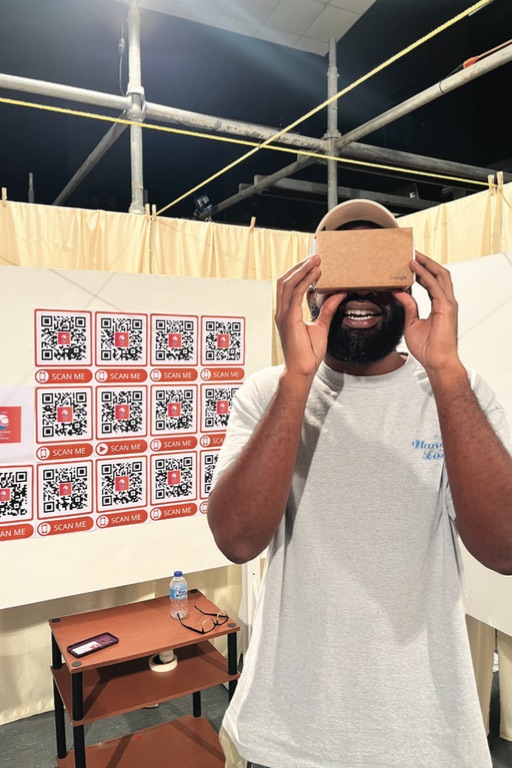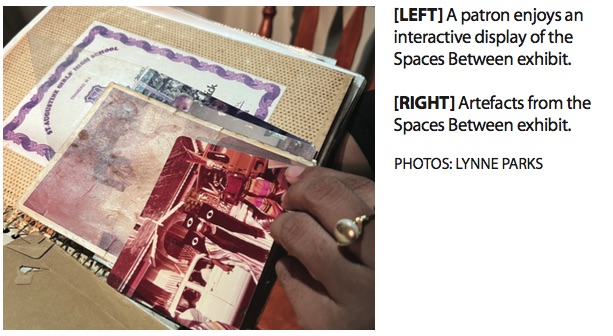Spaces Between student exhibit bridges the gap between Trinidad and Tobago
With family in both Trinidad and Tobago, Lynne Parks has always carried a dual identity. This identity made the filmmaker, lecturer and PhD candidate sensitive to the relationship between Trinidadians and Tobagonians. Her keen interest in the subject led Parks to create the immersive art exhibition Spaces Between, held recently at the The UWI Film Programme Building. Parks said her goal with the exhibit was to simulate the experience of being in between two spaces and to help citizens relate to each other, thus decreasing the cultural gaps between them.
While completing her doctoral research on national identity, Parks noticed a polarising difference between the islands of Trinidad and Tobago. Hurricane Flora, known as one of the deadliest hurricanes in history, hit Tobago in 1963. According to Parks, most Tobagonians know about its devastating aftermath, but it’s not as important in Trinidad. This is just one example of the divide.
Spaces Between was a maze that allowed participants to tangibly experience a Trinidadian and Tobagonian identity. Upon entry, the maze prompted the question, “Are you Trinidadian or Tobagonian?” By physically submerging visitors into this question, Parks promoted a united Trinbagonian identity and debunked the assumed major differences between the islands. The exhibit also interrogates the role of media in shaping national identities.
“What was initially supposed to be a film quickly turned into a massive installation art piece,” says Parks. The immersive mode truly allowed for thought-provoking discovery and interrogation of national identity. Parks noted that the piece and, by extension, cultural studies “allow us to leave spaces in academia and bring them to the people to participate in these difficult conversations”.


Spaces Between also raised awareness of how media causes polarisation between the islands and the impact on identity. The media fills the gap in our knowledge by replacing it with images that divide us, according to Parks. Hence, the most significant objects placed in the maze chambers were television or computer displays. These displays reflected the outside perspective of the islands. For example, the Trinidad Chamber displays included videos on Tobago as an idealised tourist destination, still untouched and primitive. While the Tobago Chamber displays included news of increasing crime and violence in Trinidad.
However, both the Trinidad and Tobago Chambers bore an identical resemblance to one’s experience, regardless of which island they resided in. Many items of Caribbean nostalgia were also included such as scents of citronella, old photo albums, Christmas cards, and empty Smalta bottles. “I didn’t expect the maze to evoke so much nostalgia,” says Parks. The scenes connected participants from both Trinidad and Tobago allowing a conscious realisation of a connected national identity between the islands of Trinidad and Tobago.
Notably, Parks evoked a sense of patriotism by displaying familiar Caribbean scenes. As it was placed quietly for a spectacle, the consequently liminal space created room for the romanticisation of an otherwise normal daily encounter, driving an appreciation and pride to call both Trinidad and Tobago home.